IAC News
IAC News No.115, May 2022
Japan Society of Civil Engineers International Activities Center May 6, 2022 IAC News No.115
The 9th Civil Engineer’s Lounge “DOBOKU”
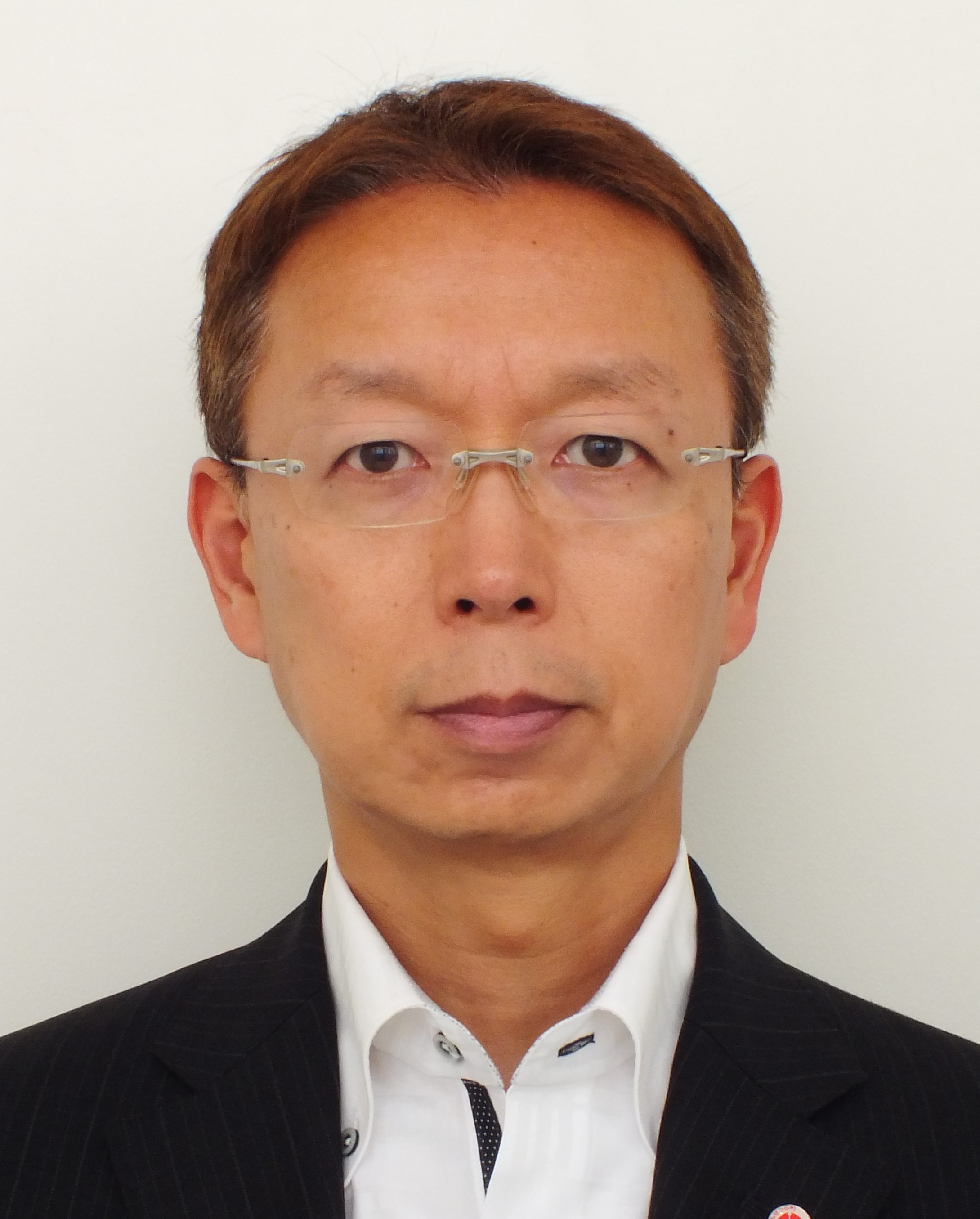
Hidemi Yanagi
(The Professional Develop‐ment and Education Program Group, IAC)
The Professional Development and Education Program Group of the International Activities Center regularly holds Civil Engineer’s Lounge “DOBOKU”, for young civil engineers to deepen their understanding of overseas construction and get them interested, attracted, and inspired to engage in overseas construction projects. As a new initiative on this occasion, we planned an online construction site tour as the central topic of discussion. Going beyond simply introducing construction projects through PowerPoint presentations, the attendees were able to watch impressive visuals taken by a drone.
This time, the “Metro Manila Light Rail Transit (LRT) Line 1 Depot Project” in the Philippines was covered, and Mr. Saburo Tsuchida (Shimizu Corporation, International Civil Engineering Division, Manila Office), who is stationed in Manila, gave an overview of the situation in the Philippines and an outline on the construction site, as well as introduced the construction site by way of video footage taken from above. After that, Mr. Tsuchida answered questions and general queries from the attendees.
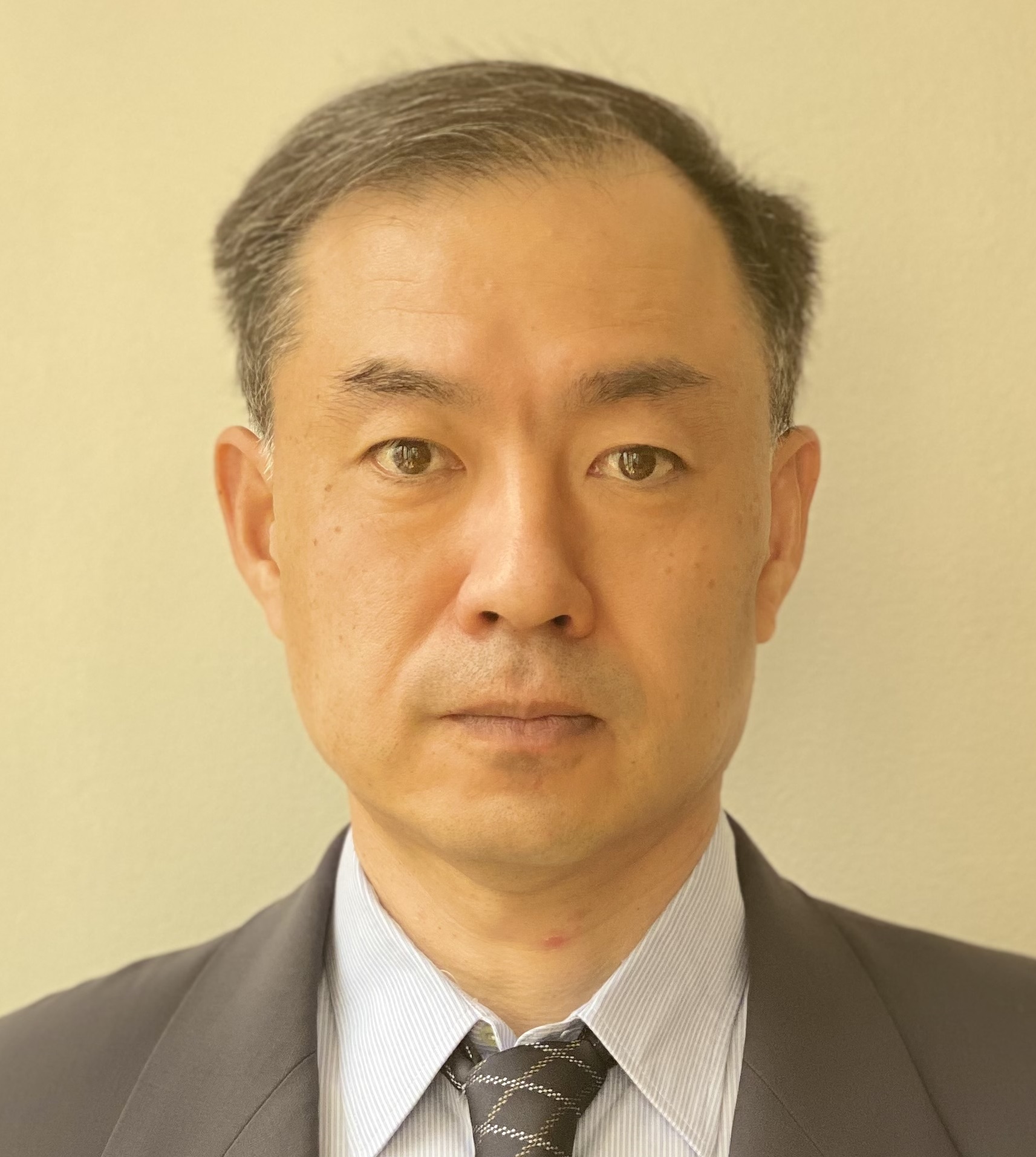
Mr. Saburo Tsuchida
(Recipient of FY2020 Continuing International Contribution Award)
Mr. Tsuchida explained that despite facing various problems such as difficulties in design and construction due to insufficient ground surveys, delays in land acquisition due to a lack of cooperation with the relevant government authorities, changing the construction plan after construction was underway due to demands by local politicians, and process delays due to the impact of the coronavirus pandemic and dealing with subsequent complaints, the project team chose to move forward with the construction rather than spark uncertainty by bringing it to a halt. The depot was created by clearing the forest while replanting the mangroves, relocating the residences of those illegally occupying the area, and removing garbage that had been dumped illegally. As measures against soft, fragile ground, the sand drain method was introduced to accelerate consolidation settlement, and the sand compaction pile method was introduced to prevent liquefaction. Attendees learned that Japanese civil engineering methods are being used here, with it being the first time these methods have been applied in the Philippines. I think that the online attendees were able to see the limited number of Japanese staff and local staff working together as a unit through the footage, which made it feel as if you were right there watching them in front of your eyes.
Some of the attendees were also surprised by general information about the Philippines, especially the average age of the 100 million-plus population being 24 years old, half that of Japan. Despite being neighboring countries in Asia, the Philippines and Japan may surprisingly know little about one another. I felt that these areas also gave us hints about what kind of information should be collected and shared in the future.
In addition, it appeared to be a new insight for the attendees to see a small number of Japanese people (five people including Japanese employees of the local subsidiary) working on a 10 billion yen construction as well as get a glimpse of how the construction was being managed.
On this occasion, what with it being an online event, there were attendees from far and wide, from Hokkaido in the north, Kyushu in the south, as well as Shenzhen in China. There were also attendees from outside the field of civil engineering. We received feedback in the form of a questionnaire, with many attendees expressing their opinion that holding the event online with at least 20 attendees is a good idea.
Going forward, we will continue to consider what topics and places to choose and how the event should be held (time, place), as well as how to make the online experience more enjoyable and better for attendees.
【Reported by Hidemi Yanagi, the Professional Development and
Education Program Group 】
Tunnel Engineering Committee
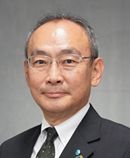
Dr. Naritoshi Fukazawa
(Chair of Tunnel Engineering Committee)
Tunnel Engineering Committee was established in February 1962, and this year marked its 60th anniversary. Tunnel Engineering Committee literally is specialized in tunnel engineering. It is not usual that a committee has a name of a specific structure. In other words, it may be said that there are various issues and challenges associated with tunnel construction.
We conduct various activities such as field surveys, researches, planning, designs, constructions, operation and maintenance in order to examine and solve issues on tunnels and tunneling that change with the times. Following are some of the activities.
・Shield Tunnel Database
We created the Shield Tunnel Database for the transmission of shield tunnel construction technology and for the efficient maintenance and management of tunnels after their operation. It is managed by Shield Tunnel Database Steering Group. In addition, in cooperation with Subcommittee on Standardization of Shield Tunnel Data Association System under the Japan Construction Information Center Foundation, the guideline to associate the database with BIM/CIM model has been made.
・Technical Subcommittee (Tunnel Library)
Technical subcommittee sets up working groups to effectively deal with modern and need-to-be-worked-out issues in the tunnel engineering field. The working groups’ reports are published in the form of “Tunnel Library.” The Tunnel Library widely is referred to by tunnel engineers and researchers, which has been published up to No. 32 so far. Two new volumes of the Tunnel Library will be published this year.
・Tunnel Engineering Research Seminar
Tunnel Engineering Research Seminar, the first of which was held in 1991, is an opportunity for tunnel engineers to discuss their researches and projects and to exchange ideas and current information of tunnel technology with each other. In that seminar, over 200 tunnel experts participate in, and around 70 papers are presented. Also the committee has published “Journal of Japan Society of Civil Engineers, Series F1 (Tunnel Engineering) Special Issue”, which is another opportunity to introduce new ideas, projects and technologies, and by doing so, made contribution to the progress of tunneling engineering.
・Standard Specifications for Tunneling
Standard Specifications for Tunneling, which is the first assignment of the Tunnel Engineering Committee, was established in 1964. Since then, that We have updated the standard specifications almost every ten years to keep up to date with the progress of tunneling technology. The latest standard specifications is published in 2016, and has been used as a reference by tunnel engineers and researchers. In addition, an English translation of the 2016 version was published online in 2019. The revision process is currently underway to enact the 2026 version.
【Reported by Naritoshi Fukazawa, Chair of Tunnel Engineering Committee】
“The 9th World Water Forum”
Japanese High School Students Post Informative Content on Interactive Website
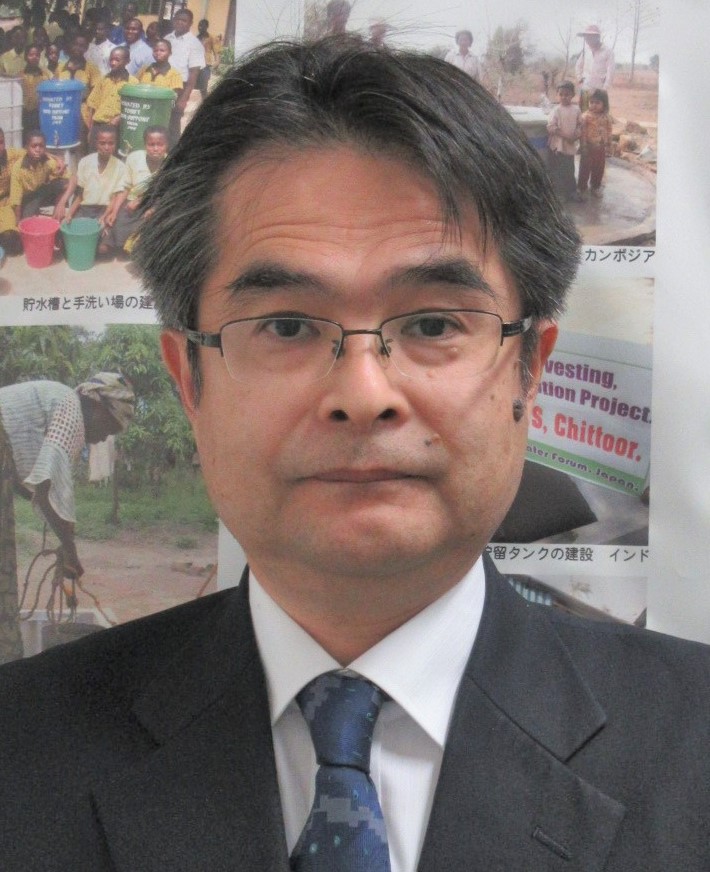 Tatsuhiro Komada
Tatsuhiro Komada
(Japan Water Forum,
a Certified NPO)
Held once every three years, the World Water Forum is one of the world’s largest international conferences related to water, where stakeholders of the water community from all over the world meet once a year to discuss and exhibit solutions to water-related challenges on Earth. The 9th World Water Forum was held in Dakar, Senegal for 6 days from March 21 to March 26, 2022. As one of the ways for people to participate in the event from Japan, the Japan Water Forum organized the Youth Water Forum Japan, where Japanese high school students communicated their activities in water-related fields to both a domestic and international audience by building an interactive website that enables the exchange of information with academics in a way that overcomes the language barrier, all the while staying in Japan. It is this interactive website that I would like to introduce you to today.
In the United Nations’ SDGs, the water and sanitation goals are outlined independently, demanding an assured response to international water challenges. The seriousness of water challenges is expected to go on for many years, and solving the challenges requires efforts across different generations. The goal of the Youth Water Forum Japan’s activities is to nurture young individuals who can, mainly in water-related fields, prosper on the global stage in the future. The establishment and activities of this forum were examined in collaboration with academics in Japan.
This interactive website is a place for Japanese high school students to participate free from distance, time, and language barriers by creating and posting videos roughly three minutes long in English on the topic of resolving water challenges across the world and in different regions, as well as for domestic and overseas high school students and academics to share information with each other online. To make it a platform familiar to the current generation of high school students, a Japanese and English website was built that incorporated posting videos with a video library via YouTube as well as posting content on social media platforms such as Facebook and Twitter.
For high school students, university faculty staff who supports the Youth Water Forum held a Water Culture Seminar to facilitate learning about water and provide guidance on creating videos to be shown on the interactive website. In addition, high schools from Japan and abroad involved in the initiative to date were encouraged to make videos, and as a result, over 30 videos have been posted on the website, including youngsters making reports on the variety of water in river basins in their local area.
During The 9th World Water Forum initiatives of Youth Space, a youth participation program regularly organized by the World Water Council, and the exhibition pavilion of the Japan Water Forum, the efforts of the Youth Water Forum and videos created by high school students will be shared with attendees as a basis for discussions. The interactive website that has been built will be kept up and running, and comments will be made in sessions and leaflets produced to let people know that anyone can watch the videos or share their thoughts on the website at any time.
Even after the end of the World Water Forum, more video contributions will be permanently encouraged to build on the collection of videos through the Youth Water Forum. The produced content will be shared at regular international conferences such as the World Water Forum and the Asia-Pacific Water Summit.
Through the interactive website, the next generation of high school students will think about how to solve water-related challenges across the world as a whole and in different regions and post information online to foster awareness as individuals with an international mindset. Furthermore, through communication among domestic and overseas high school students and academics, we anticipate a shared awareness of water-related challenges among people of different generations.
The building of the interactive website was carried out with financial assistance from the JSCE International Scientific Exchange Fund.
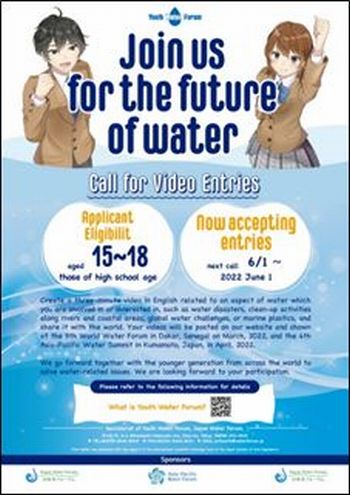
Call for Video Entries for the 9th World Water Forum
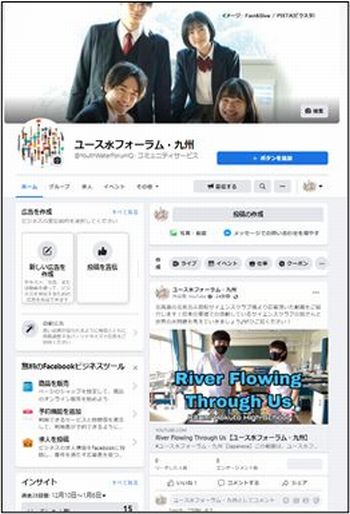
Facebook Account
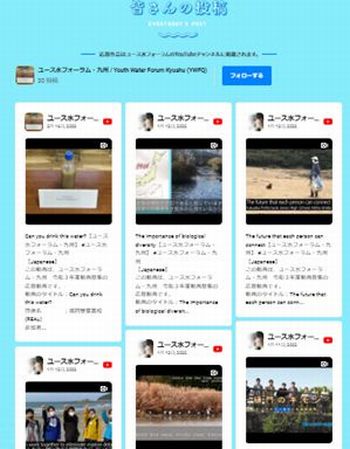
Newly Built Interactive Website
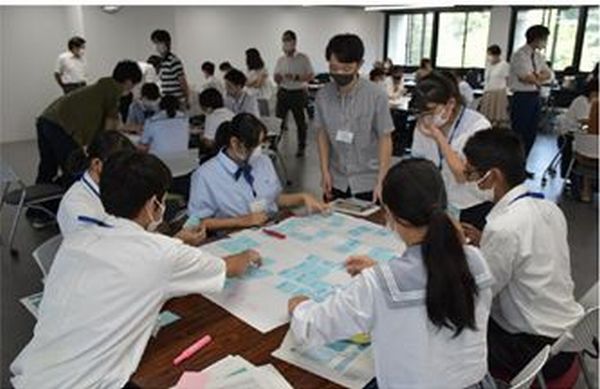
University Faculty Staff Provides Video Production Support to High School Students
【Reported by Tatsuhiro Komada, (Japan Water Forum)】
Updates
◆【YouTube】
・3rd JSCE Concrete Committee Webinar "Frontiers of Concrete Technology" (March 9)
https://youtu.be/hwfl7mrs7-I
◆JSCE Concrete Committee Newsletter No.64, January 2022
http://www.jsce.or.jp/committee/concrete/e/newsletter/newsletter64/index.html
◆The International Infrastructure Archives
– A Compilation of Japan’s Greatest Projects in Transfer of Civil Engineering Technology in Service –
http://www.jsce.or.jp/e/archive/
・【New Project】Male’ Seawall Project (Maldives)
http://www.jsce.or.jp/e/archive/project/pj14.html
◆ACECC OUTLOOK No.20 (March, 2022)
https://acecc-world.org/sites/default/files/assets/newsletter/acecc-no20...
◆The 9th Civil Engineering Conference in the Asian Region (CECAR9)
https://cecar9.com/
◆American Society of Civil Engineers (ASCE)
・Joint Japan-US Symposium on Assessment, Management, and Governance for Infrastructure Resilience
*Pre-recorded Presentation Available on the Website.
https://www.infraresil.jp/event/01/
・ASCE Japan Section Annual Newsletter 2022
https://www.asce.org/communities/find-a-group/regions/region-10/japan
◆The 9th International Conference on Flood Management (ICFM9)
https://www.icfm9.jp/index.html
◆IAC “News Pick Up!!” on the JSCE Japanese website
https://committees.jsce.or.jp/kokusai/iac_dayori_2022
◆Summary of featured articles in JSCE Magazine Vol. 107, No.5 May 2022
http://www.jsce-int.org/pub/magazine
◆Journal of JSCE
https://www.jstage.jst.go.jp/browse/journalofjsce
Subcription
The IAC News is one of the communication tools to share information and ideas with the members. We would like to invite you, your friends and colleagues to join the communication and to subscribe the IAC News. Please register online: (http://www.jsce-int.org/node/150). We look forward to meeting you.
